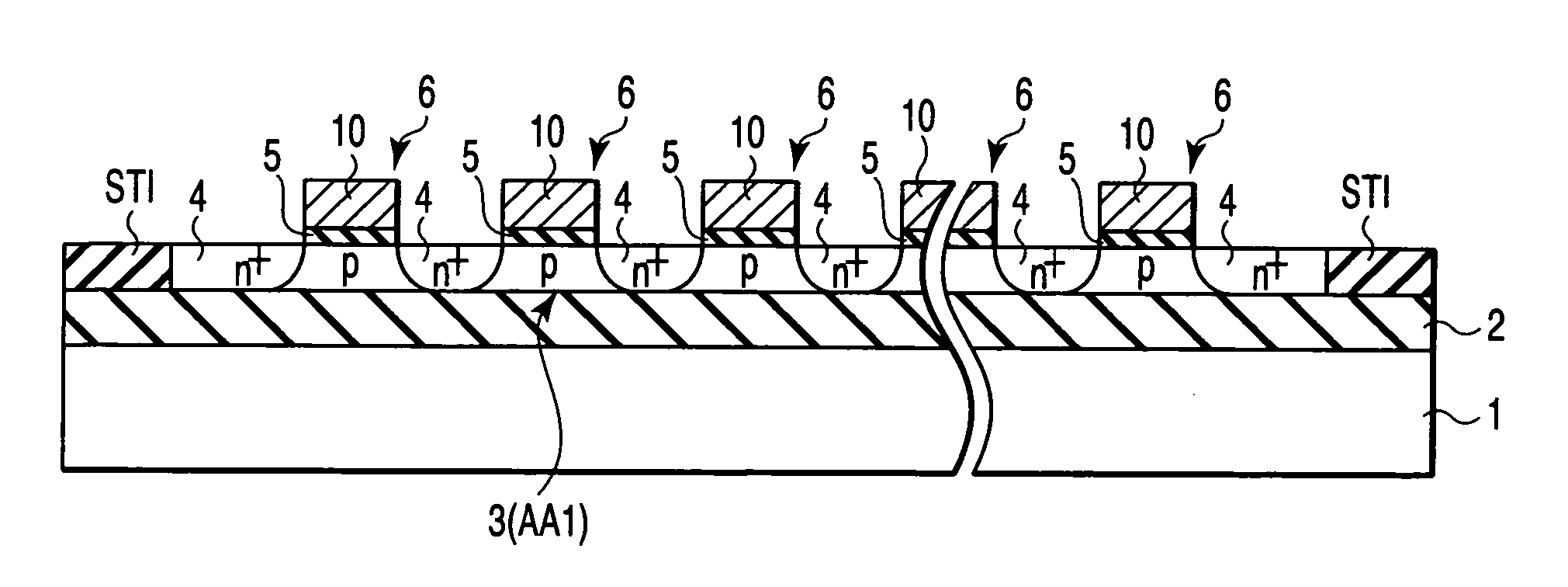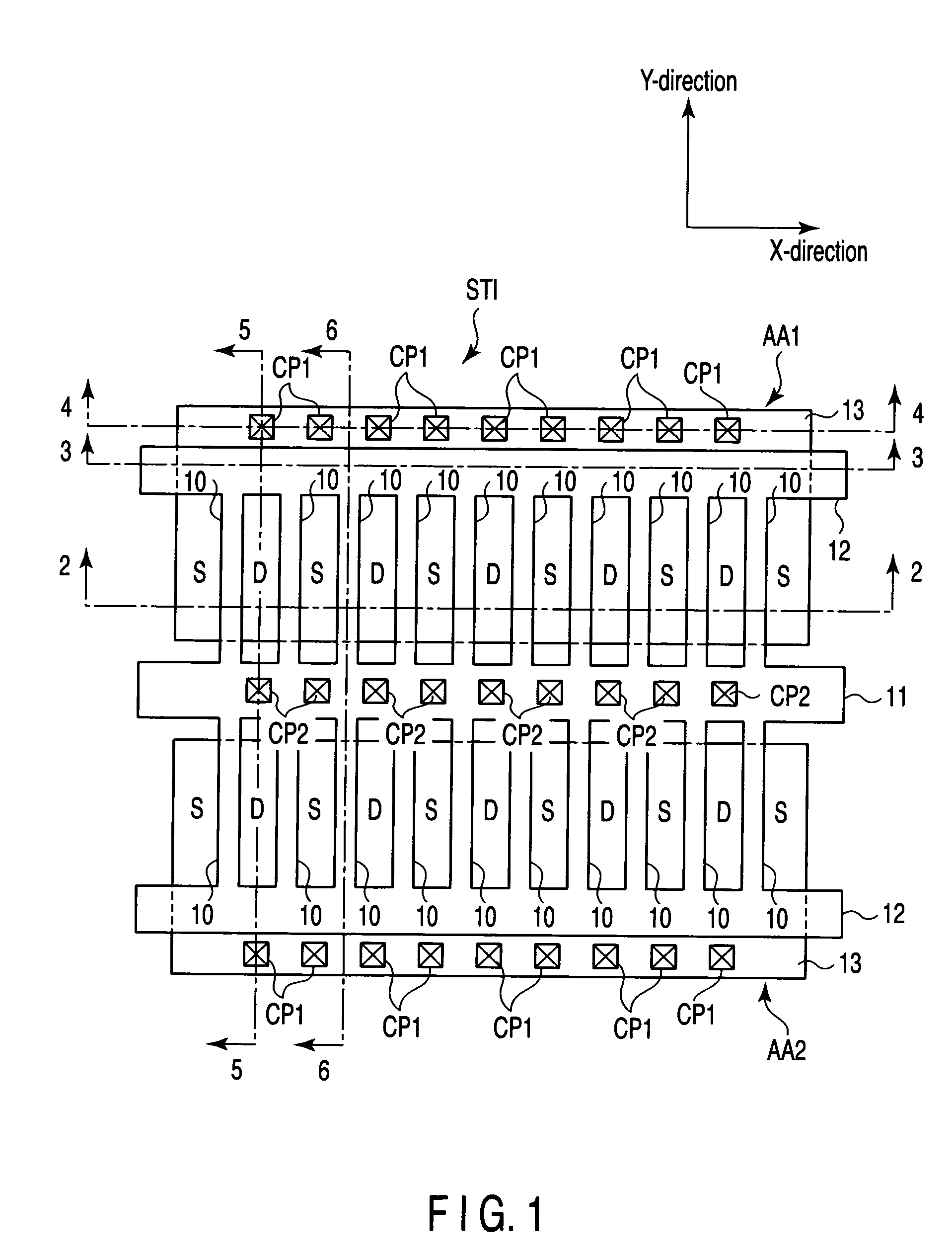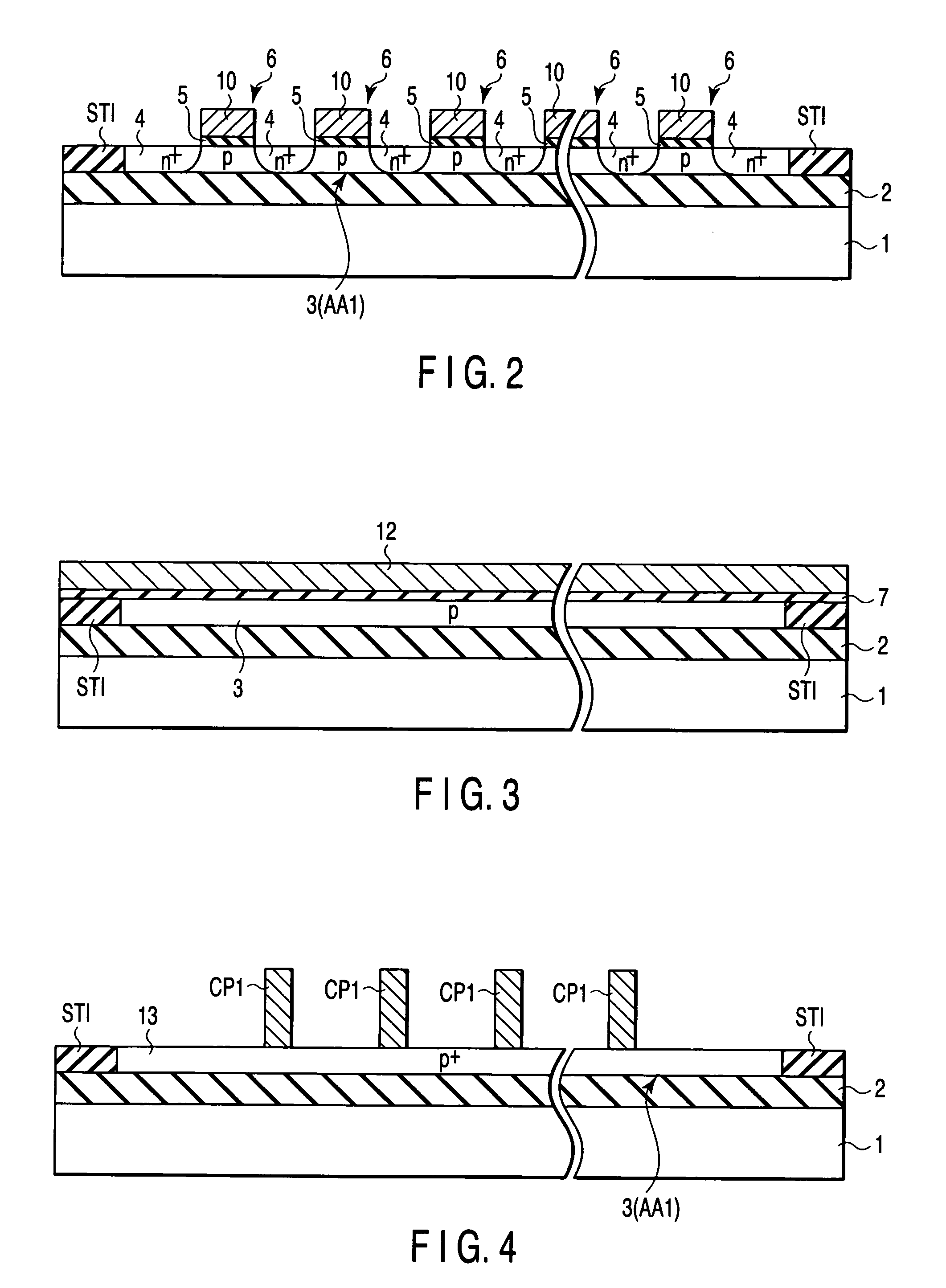Semiconductor device having SOI substrate
a semiconductor and substrate technology, applied in the direction of semiconductor devices, electrical devices, transistors, etc., can solve the problems of variable threshold voltage and leak current in the semiconductor element, and the way to suppress the floating body effect has not been conventionally proposed
- Summary
- Abstract
- Description
- Claims
- Application Information
AI Technical Summary
Problems solved by technology
Method used
Image
Examples
first embodiment
[0061] There will now be described a semiconductor device according to this invention with reference to FIG. 1. FIG. 1 is a plan view of an analog CMOS circuit according to the present embodiment.
[0062] As shown in FIG. 1, the CMOS circuit includes two element regions AA1, AA2. The element regions AA1, AA2 are p-type semiconductor regions formed on an insulating film which is formed on a semiconductor substrate (not shown). The two element regions AA1, AA2 are separated from each other and arranged to extend in a Y direction. The element regions AA1, AA2 are surrounded by an element isolation region STI and the element regions AA1 and AA2 are electrically isolated from each other by the element isolation region STI. A plurality of stripe-shaped gate electrodes 10 are formed to extend in a Y direction on the element regions AA1, AA2 with gate insulating films (not shown) disposed therebetween. The gate electrodes 10 are arranged in an X direction which is perpendicular to the Y direc...
second embodiment
[0102] As shown in FIG. 24, the structure of the present embodiment and the structure of FIG. 7 explained in the second embodiment can be combined. FIG. 24 is a plan view of a CMOS circuit according to a first modification of the present embodiment. As shown in FIG. 24, contact plugs CP4 can be additionally formed on the wiring layers 22 in the structure shown in FIG. 21. Of course, it is possible to further extend the wiring layer 22 in the Y direction in FIG. 24.
[0103] As shown in FIG. 25, the structure according to the present embodiment can be applied to the structure shown in FIG. 20. FIG. 25 is a plan view of a CMOS circuit according to a second modification of the present embodiment. As shown in FIG. 25, wiring layers 24 can be additionally formed in the structure shown in FIG. 20.
[0104] Next, a semiconductor device according to a fourth embodiment of this invention is explained. The present embodiment can be attained by applying the structure explained in the first to third...
PUM
 Login to View More
Login to View More Abstract
Description
Claims
Application Information
 Login to View More
Login to View More - R&D
- Intellectual Property
- Life Sciences
- Materials
- Tech Scout
- Unparalleled Data Quality
- Higher Quality Content
- 60% Fewer Hallucinations
Browse by: Latest US Patents, China's latest patents, Technical Efficacy Thesaurus, Application Domain, Technology Topic, Popular Technical Reports.
© 2025 PatSnap. All rights reserved.Legal|Privacy policy|Modern Slavery Act Transparency Statement|Sitemap|About US| Contact US: help@patsnap.com



